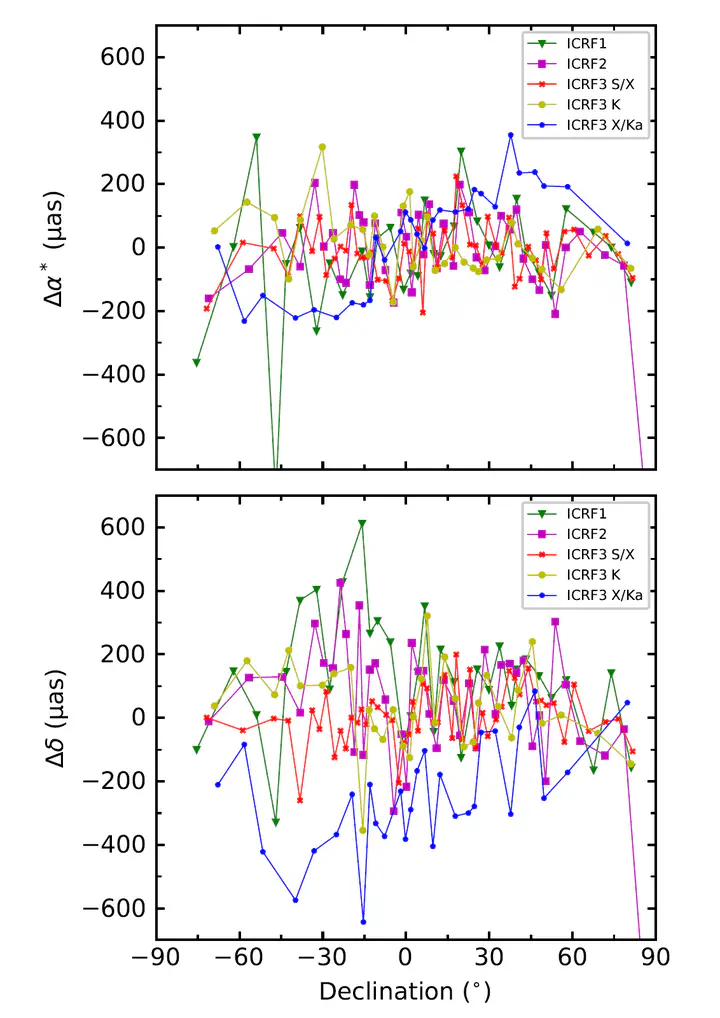 Global systematics of ICRF3 against Gaia DR2 (Liu et al. 2020, A&A 634, A28)
Global systematics of ICRF3 against Gaia DR2 (Liu et al. 2020, A&A 634, A28)Abstract
We investigate the overall properties of the ICRF3 using Gaia DR2 as an external reference. Comparing VLBI positions at S/X, K, and X/Ka with optical counterparts (G < 18.7), we analyze formal errors, declination dependence, and global systematics via vector spherical harmonics. The ICRF3 S/X-frame shows improved accuracy and near–zonal-error-free behavior, consistent with Gaia-CRF2. K and X/Ka frames achieve high formal precision but exhibit zonal systematics, including a significant glide along the Z-axis (>200 μas) in X/Ka, likely due to sparse observations and southern geometry.
We compare the ICRF catalogs (ICRF1/2/3) with Gaia DR2 using vector spherical harmonics (VSH) to characterize
global differences (rotation, glide, quadrupoles).
The ICRF3 S/X catalog agrees with Gaia DR2 at the ~30 μas level globally and is nearly free of declination-dependent
(zonal) errors, reflecting improvements from southern re-observations, VCS-II updates, and modeling of Galactic aberration.
The K and X/Ka frames reach better formal precision but show noticeable zonal terms; X/Ka exhibits a
200 μas glide along Z and >100 μas quadrupole components, attributed to sparse sources and weak southern geometry. These results emphasize the need for denser southern coverage at high frequencies to reduce zonal systematics.
Citation:
Liu, N., Lambert, S. B., Zhu, Z., & Liu, J.-C. (2020). Systematics and accuracy of VLBI astrometry: A comparison with Gaia Data Release 2.
Astronomy & Astrophysics, 634, A28.
https://doi.org/10.1051/0004-6361/201936996